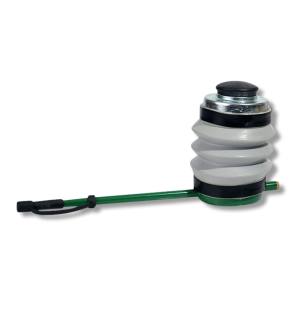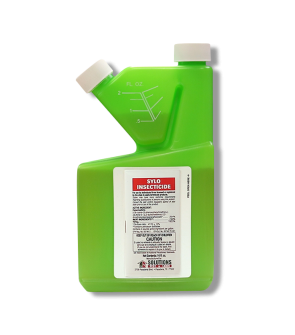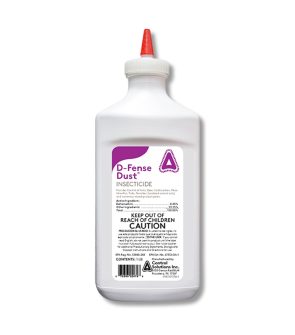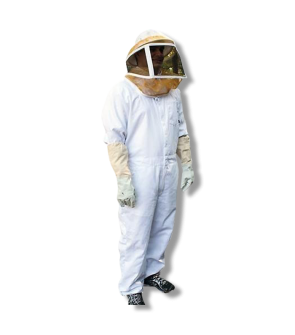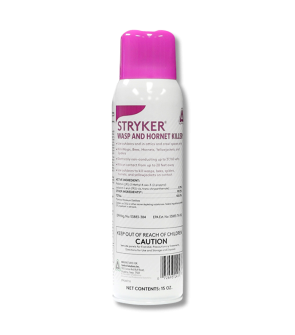Hornet Control
Most Effective Products
Hornet Control: How to Get Rid of Hornets
Hornets are a subspecies of wasps and are one of the larger-sized varieties of the stinging insect, reaching up to 5.5 cm (2.2 in) in length. Hornets are among the most dangerous and feared pests by homeowners when they are seen flying around the yard or, even worse, when they are setting up a nest beside your home or a tree in your yard.
Hornets are notorious for their tendency to be aggressive and deliver a painful and irritating sting to anyone who may disturb them or intrude upon their nest. If you're allergic, a Hornet sting can be life-threatening.
A troublesome characteristic of Hornets is that, unlike bees, Hornets can and will sting a person an unlimited number of times. What makes it worse is that when Hornets sting, they release pheromones out into the air which sends a message to other Hornets to join in and sting the same victim as well!
If Hornets have set up a nest in your yard or are frequenting your property, you need to get on the attack before they start attacking you. Our DIY Hornet treatment guide maps out the best techniques and methods to kill Hornets and destroy their nest quickly and affordably while keeping you safe. By following our step-by-step directions and applying our recommended products, we guarantee you will eliminate Hornets from your yard for good.
Identification
Before you can proceed with chemical applications, make sure that the pest you are encountering is actually a hornet. Misidentification can lead to buying the wrong products and applying the wrong treatment techniques, which will cost you money and time. Here are some characteristics your should watch out for to help you with proper identification:

- There are two kinds of Hornets that are commonly encountered, one is the European Hornet, which as the name suggests, is primarily found in Europe and the bald-faced Hornet, which is native to North America.
- Bald-faced Hornets have white marks on their head and thorax and build nests that are covered in a papery shell.
- European Hornets are brown colored with orange marks and make their nests in tree stumps or a secluded area in a building.
- Bald-faced Hornets are more closely related to yellow jackets. No matter the case, folks have been accustomed to calling this stinging pest a Hornet.
- The difference between the yellow jacket and a bald-faced Hornet (aside from the differences in size, color, and hunting strategy) is the fact that a bald-faced Hornet prefers to nest in aerial settings up in a tree or an outdoor corner of a house compared to a yellow jacket which mainly establishes nests underground.
Use the description and image above to help you in identifying Hornets on your property. If you are having trouble, reach out to us and one of our pest control experts will help you to properly ID the pest as well as offer you product recommendations for control.
Inspection
After you have correctly identified hornets on your property, you can proceed with an inspection to locate the Hornet nest, observe its setup, and whether there is more than one point of entry into the nest. It'd be wise to be well covered when inspecting for Hornets as they are territorial and if you get to close to a nest they will aggressively try to sting you.
Where To Inspect
Scan around your yard and around the exterior perimeter of your home for Hornet activity and possible nesting sites. Hornet nests are typically found in sheltered locations, like leafy trees, under eaves and roofing, in attics, or on windows.

What To Look For
You should be looking for active Hornets and any visible nests. If you find one, observe where it flies and before long they should reveal to you where they are nesting. It is usually hard to miss a Hornet’s nest. It has a football kind of shape and some are found free-hanging and others are attached to a larger object like a wall or a tree branch.
Once you have located their nesting area, you can move on to treatment.
Treatment
Before tackling a Hornet treatment application, make sure you first have on the proper gear in the form of thick, long-sleeved clothes or to ensure the most possible safety, a professional bee suit. Cover up as much exposed skin as possible to prevent stings and overexposure to chemical pesticides that will be sprayed to control Hornets and their nests. It is also best to time your spraying at night when wasps are usually all inside their nest and resting up.
To get rid of Hornets, we recommend applying Stryker Wasp and Hornet killer directly to Hornet's nests to knock down the nest and kill any live Hornets inside the nest. You can then apply Sylo Insecticide and D-fense Dust around your home and yard to discourage re-nesting.
Step 1 - Treat the Nest Directly with Stryker Wasp and Hornet Killer
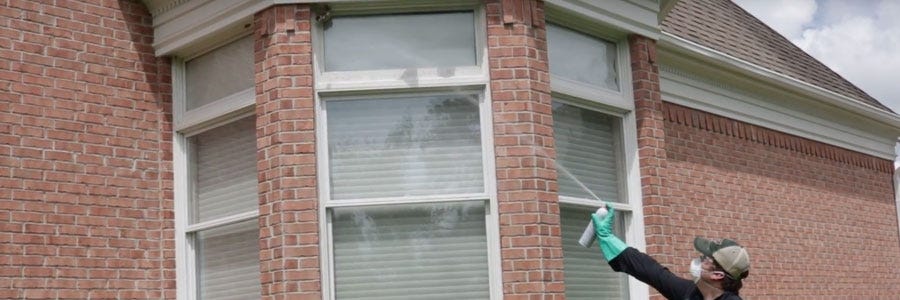
If you find a Hornets' nest and it is above ground, apply Stryker Wasp and Hornet Killer directly to the nest. Stryker Wasp and Hornet Killer will reach up to 20 feet away and provide instant knockdown, and a quick kill of any Hornets which fly out and are in attack mode. We recommend applying Stryker Wasp and Hornet Killer to completely get rid of a hornet nest.
To use Stryker Wasp and Hornet Killer, wait until the evening or when it gets dark to apply as this is when all the Hornets are inside the nest. Simply shake, point, and spray. Spray directly at the nest entrance for 6 to 8 seconds. Drench the whole nest and kill any escaping hornets so they are knocked down upon contact.
Step 2 - Apply Sylo Insecticide

Sylo Insecticide is a synthetic pyrethroid insecticide that contains the active ingredient Cypermethrin and is effective in killing and deterring insects that Hornets eat and will prevent Hornets from establishing nests on your property.
First, measure the square footage of your lawn to determine how much Sylo you will need. Sylo is to be applied at a 0.1% emulsion which is a rate of 0.5 fluid ounces of Sylo per 1 gallon of water to cover 1,000 square feet. We recommend using a 1-gallon hand pump sprayer for ease of use.
To mix Sylo, first fill your sprayer halfway with water. Add 0.5 fl .oz. of Sylo, and then fill the sprayer the rest of the way with water to the 1-gallon line. Close the sprayer and shake to ensure an even emulsion.
Apply the solution as a barrier treatment around your home and other structures. Create the barrier by spraying 3 feet up the wall and at least 6 feet out on the ground. Also treat eaves and common entry points around the home or structure, such as around windows, doors, utility openings, weep holes, and any other voids.
Once applied, any flying hornets in your yard that come into contact with this solution will approximately die within 20 minutes.
Step 3 - Treat Voids with D-Fense Dust
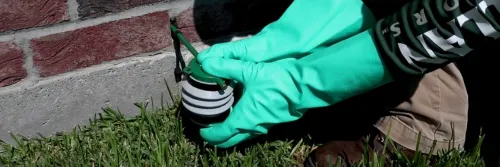
D-Fense Dust is a waterproof deltamethrin dust that can successfully control a wide range of insects that Hornets like to target as a food source. Apply the dust in holes and voids around the home to discourage hornets from landing and exploring such areas.
It is best to use a handheld pesticide duster to treat these holes and nest areas for precision and accuracy of getting the dust where you need it to go. Add D-Fense Dust to a duster at a rate of 2 to 3 grams per square yard or 0.5 lbs per 1,000 sq. ft. Lightly squeeze the duster to puff dust directly to voids around the property, such as weep holes or cracks and crevices along eaves.
Prevention
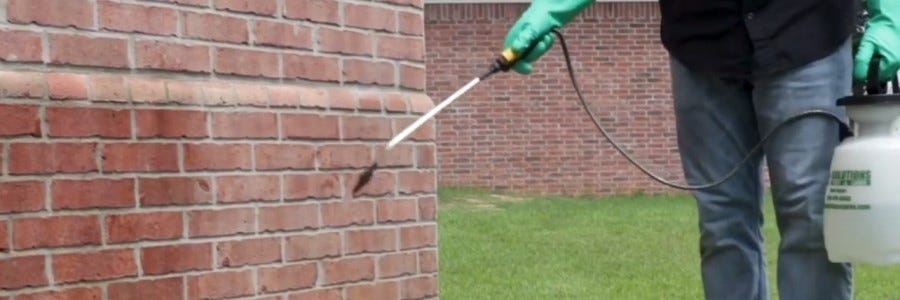
After applying treatment, you should have no more Hornets on your property, but that doesn't mean they won't make a comeback. Hornets are a tougher type of flying pest to totally prevent because they are such random colonizers. Monitor your property for Hornet activity and when you notice the Hornet population returning, reapply the treatment products we recommended. Additionally, some other helpful things you can do to discourage Hornets from choosing your yard to nest is to:
- Trim back trees and bushes
- Paint or repaint walls, eaves, or other possible nesting areas.
- Spray Sylo insecticide around the perimeter of your home every 90 days as a barrier treatment.
Key Takeaways
What are Hornets?
- Hornets are one of the larger wasp species and are very aggressive and territorial. They are also notorious for building nests in the most outlandish of places.
- Like wasps and bees, Hornets are social insects and like to live in their colonies and only get aggressive when there’s a need to defend it.
How To Get Rid of Hornets In Your Yard
- Our top recommendations for treating Hornets is to locate the nest and spray Stryker Wasp and Hornet Killer directly to the nest and kill any escaping Hornets.
- Make sure to be well covered when treating for Hornets as they will be looking to sting you for attacking their home.
- After knocking down the nest, spray Sylo Insecticide around your home to discourage Hornets from making new nests.
Preventing Hornet Reinfestation
-
Prevention of Hornets will involve a combination of environmental modification methods like trimming back tree branches, reducing leaf litter and periodic applications of Sylo Insecticide as a barrier treatment around your home.

